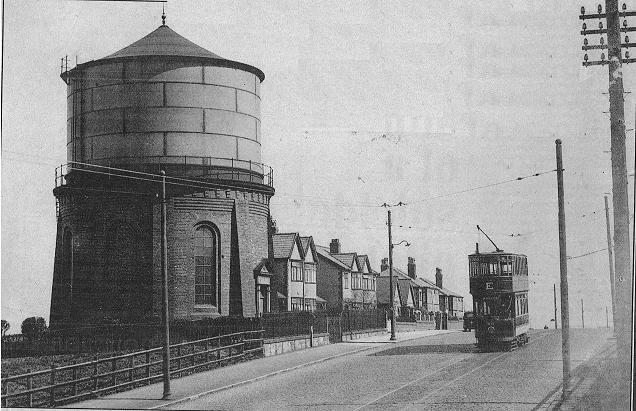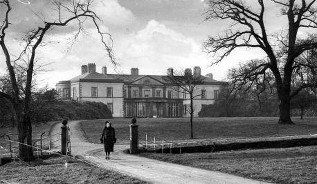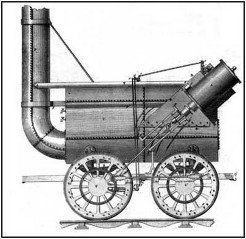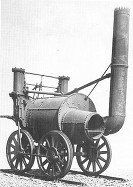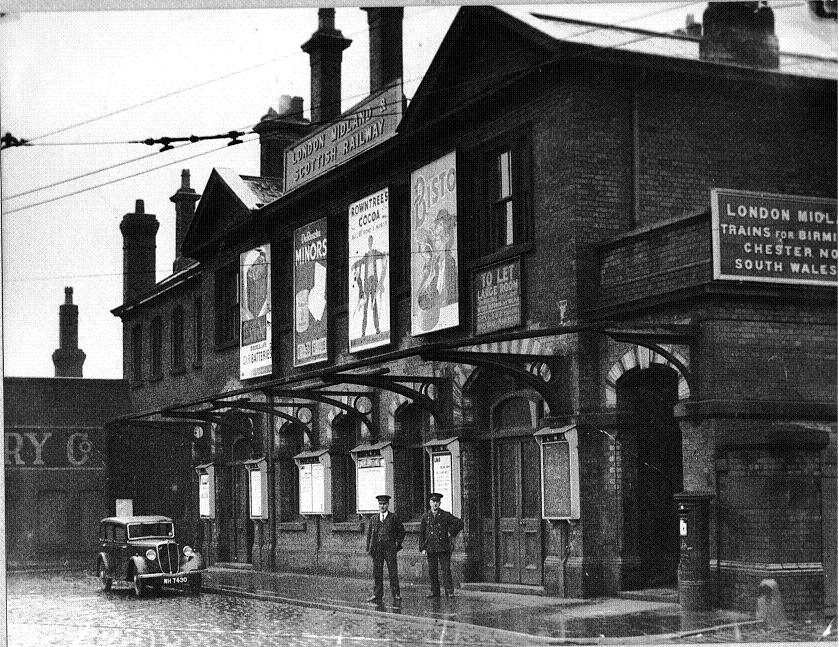Although small scale coal digging was widespread in the area it was performed on an industrial scale in the early 1800s on the estates of William Hulton especially around Chequerbent (the Quarter Pit and School Pit at Pendlebury Fold) and the edge of Atherton at the Hulton Collieries Company (eg No 3 Bank Pit or Pretoria Pit). He would supply coal to power the mills of the rapidly growing cotton industry with mills at Atherton, Tyldesley, Leigh and especially Bolton where there was also a substantial domestic demand. His coal would be taken in horse drawn carts along a route close to the present Wigan Road / Deane Road or over Daubhill via the Bolton and St Helens Turnpike.
Although small scale coal digging was widespread in the area it was performed on an industrial scale in the early 1800s on the estates of William Hulton especially around Chequerbent (the Quarter Pit and School Pit at Pendlebury Fold) and the edge of Atherton at the Hulton Collieries Company (eg No 3 Bank Pit or Pretoria Pit). He would supply coal to power the mills of the rapidly growing cotton industry with mills at Atherton, Tyldesley, Leigh and especially Bolton where there was also a substantial domestic demand. His coal would be taken in horse drawn carts along a route close to the present Wigan Road / Deane Road or over Daubhill via the Bolton and St Helens Turnpike.
Hulton Hall. Clipping from Bolton Evening News >>>>>>>>>>>>
Sign board at "The Hulton Arms", Four Lane Ends
This was changed in 2014 and was removed around 2019.
In 1824, William Hulton decided on the construction of a railway to speed delivery of coal from his mines to Bolton.
The Bolton and Leigh Railway company was formed to get thenecessary bills through Parliament and to raise the necessary finance (not entirely paid for by Hulton as often thought). Hulton formed a committee of about forty local dignitaries and contacted George Stephenson who is reported to have stayed at Hulton Park for three weeks and who was already in the early stages of surveying for the Liverpool and Manchester Railway.
Stephenson commissioned Hugh Steel who had worked with him on L&M to survey the Chequerbent to Bolton route which was then built by a local man Robert Dalglish (who had already constructed the first Railway in Lancashire in 1812 to carry coal from Mr.John Clarke's Orrell Colliery, Winstanley near Wigan to the Leeds and Liverpool Canal at Gathurst near Crooke Village, using “Blenkinsop and Murrays” patent cog and rack steam locomotives to haul the coal wagons) between 1824 and 1828.
Opened for use in 1828 it precedes Stephenson’s Liverpool to Manchester railway which began construction in 1826 and opened in 1830 (the Rainhill Trials at which George Stephenson with “The Rocket” won the contract to build locomotives for the Manchester to Liverpool railway took place on 16th October 1829). In 1829 it was extended to Leigh. Shortly after, the Leigh and Kenyon Railway was built and joined to the Leigh-Bolton track extending this to Kenyon to join George Stephenson’s Liverpool Manchester railway expressly to create a link from Bolton to Liverpool. The Liverpool Manchester railway was the world’s first railway whose primary purpose was the transport of passengers and Kenyon junction (originally Bolton junction but renamed in June 1843) was the first main-line junction.
The first locomotive was the “Lancashire Witch”, originally intended for the Manchester-Liverpool line but brought to Bolton because the Bolton-Leigh railway was opened first. The more famous Rocket which came a year LATER was a development of this. After the Rainhill Trials the Manchester Liverpool railway company bought “Sans Pareil” as well as “Rocket” and later leased it to the Bolton Leigh company on which line it ran until 1844 (Wikipedia).
The Bolton to Kenyon junction line ran from sheds (still in use by Mason’s fireplaces in the early 1960s but demolished in 1963) in the corner of Moor Lane and Deansgate alongside the Bessemer furnace (demolished around 1925), alongside Blackhorse Street, across Great Moor Street and Crook St, Fletcher St, High St, Adelaide Street and across St Helens Road at the level crossing. The gradient up to Adelaide Street was severe (1 in 33) and in the early years the trains were assisted by a cable pulled by a stationary engine. There was a similar arrangement up to Chequerbent from Atherton (1 in 30). Initially just the trucks were cable-hauled down and up an “inclined plane” from Bolton to Adelaide Street leaving the locomotive available to return to Chequerbent, a relatively level journey, for another load. But before long the locomotive remained coupled to the trucks for the whole journey which provided motive power between Crook Street and Deansgate as well as removing the need for coupling and decoupling at Adelaide Street.
It is likely that the trucks without the loco at the bottom of the inclined plane were taken onwards by horses. A little street between Great Moor Street and New Street on the 1891 map is called Stable Row. This may well be where the necessary animals were housed.
The line was built before the Sunnyside Mills. It is likely that the site of the mills was determined by the existence of the railway which would have delivered coal and raw cotton and almost certainly took finished products away.
At the inauguration of the line, the locomotive was named “The Lancashire Witch” by Mrs Hulton then driven into Bolton with Robert Stephenson at the controls and George Stephenson sitting with the honoured guests. They alighted at Blackhorse Street from where they walked to the Commercial Hotel.
For a report on the inauguration of the railway from the Bolton Chronicle - scroll to the bottom of the page.
The “Lancashire Witch” had been intended for the Liverpool and Manchester railway but was brought to Bolton because this line was opened first. It was later used on L&MR and the Sans Pareil brought to B&LR. It seems that in the early days the railway only had one locomotive but by 1831 it owned three others, "Union" built in 1830 by Rothwell, Hick and Rothwell of Bolton, and "Salamander" and "Veteran" both built by Crook & Dean in Bolton. (Wikipedia quoting Sweeney, D.J. (1996). A Lancashire Triangle Part One. Triangle Publishing)
The first use of the railway by the public was an excursion to Newton for a horse racing event.
For regular public use, two trains a day from Bolton to Liverpool beginning 13 June 1831, a simple station was established at Great Moor Street / Blackhorse Street where the Bolton and Leigh railway company had offices. The station was at street level (and was known as “Bolton station” with “Great Moor Street” being added in October 1849 some time after the rival Trinity Street station had opened.) whereas the later station that many people still remember was elevated.
The Bolton to Leigh line came under the ownership of London, North Western Railway (LNWR). When the Lancashire and Yorkshire (L&Y) opened Trinity Street station with a line from Bolton to Manchester (29th May 1838 to Salford, 1843 to Manchester Victoria and thence into Yorkshire, 1841 via Chorley to Preston, 1845 to Blackburn, 1848 Wigan and on to Liverpool, 1848 Bury and Rochdale) LNWR also applied for permission to run into Manchester. The anticipated increase in passenger necessitated an improved station so a temporary station, Bolton Crook Street, was opened 1st August 1871 while a new station was built at Great Moor Street. The line was raised by about ten feet which allowed the line to cross Crook Street by a bridge and also reduced the gradient of the line into the station.
“The new Bolton Great Moor Street, built in a classic 'Italian' style, came into use on 28.9.1874. The station and its approaches were on a viaduct and it consisted of four platform faces of 300ft length. They were covered over by a roof and provided with extensive waiting facilities.” The first service on the new Manchester line went from Great Moor Street to Roe Green on 1.4.1875.entirely new line all the way to Manchester.
At Roe Green it connected with existing railways. This was not an
picture from an original print:
it also appears on:-
http://www.youtube.com/watch?v=xou3Y3AaCHg
!!!have a look at this fantastic set of pictures of old Bolton!!!
The line to Deansgate remained for a little while after the new station was built.
Stations were established at Daubhill and at Chequerbent in 1846. (Wikipedia) though evidence for this is lacking.
In 1885 The railway was realigned from just west of Fletcher Street to just west of Deane Church Lane. This is said to be to avoid the steep gradient of the inclined plane from High Street to Adelaide Street and the cable hauling. However by this time locomotives were able to handle that gradient and the new line had a short length only slightly less steep.
Other possible considerations were relaying the track where there was enough space to provide two parallel tracks and avoiding the level crossings particularly at the now quite busy St Helens Road at Daubhill but also at High Street.
The new line went under the Robert Heywood park by a tunnel re-emerging immediately beyond High Street. It was routed behind Sunnyside Mills and approached St Helens Road in a cutting so that it went under the junction with Deane Church Lane and Morris Green Lane. It joined the original line near the corner of what became Hulton Lane Playing Fields and continued, now double tracked, under Hulton Lane to Hulton sidings and beyond.
The original (1828 single tracked) line was retained from Fletcher Street to High Street to serve local factories and deliver Burton on Trent water to Magees brewery - and from Adelaide Street to Deane Church Lane to serve Sunnyside Mills and the Daubhill coalyard. The level crossing was retained but was now only crossed by a couple of trains a day.
The railway was similarly diverted at Chequerbent and at this time in 1885 stations were opened at Daubhill and at Chequerbent.
After nationalisation in 1948 the value of having two lines from Manchester to Bolton was being questioned. The Great Moor Street service took longer than the L&Y route. By 1954 only four trains per day operated towards Manchester. The Kenyon line had also declined and only six trains operated to either Kenyon Junction or Warrington. All regular services operating out of Bolton Great Moor Street ceased to operate on 27.3.1954. The last train was the 10.35pm to Kenyon Junction.
After closure Rugby League Specials and Holiday trains continued to use the station until 1958. Goods traffic continued until the early 1960's. The Manchester direct line was the first to be lifted. The Kenyon line was lifted in stages between 1963 and 1969 the southernmost section surviving the longest.
Bolton Great Moor Street station was demolished in 1966.
It may be that there was a Daubhill Station on this original line, demolished in 1885 when the line was re-routed. Its whereabouts are not precisely known if it existed at all. A drawing of the Sunnyside Mills complex (see later) shows the old railway running in front of the mills just down from St Helens Road. It shows a structure that Lesley Gent (ex Bolton Evening News editor) in his book “Bolton Past” says is the old Daubhill station. However that drawing differs from the actual apprearance of the mills complex in a number of details probably having been drawn BEFORE the mill was built to illustrate what the site was going to look like. So that drawing is certainly not evidence of a station. (When William Hulton opened the line it was to transport his coal into Bolton and a station at Daubhill was not needed in the early days, though trains would have stopped for the attachment and detachment of the cable.) There is no station marked on an 1850 map (before Sunnyside Mills were built).
More on a later page.
[[ There have been steeper tracks (excluding rack railways like Snowdon’s 1 in 7.85 average, 1 in 5.5 steepest). The Hopton incline on the Cromford to High Peak railway was 1 in 14 and was originally cable hauled but replaced with locos in 1887. The steepest main line gradient on the current railway network is the Lickey Incline, between Bromsgrove and Blackwell in the West Midlands at 1 in 37.]]
http://www.bolton.org.uk/railways.html
These are the promoters of the Bolton and Leigh railway:
Cotton manufacturers: John Mawdsley, Thomas Holmes, William Morris. Spinners: Thomas Bolling, Edward Bolling, William Bolling. Bleachers: Richard Ainsworth, Peter Ainsworth, George Blair. Calico printers: H.Duckworth. Reed makers: William Pratt, Richard Taylor. Vitriol and Bleaching powder manufacturer: John Rainforth. Iron founders: Joseph Cole, Isaac Dobson, Benjamin Dobson, Benjamin Hick, James Hilton, Peter Rothwell, William Swift, Thomas Thompson. Colliery owners: William Hulton, John Booth. Brewer: Matthew Carr Dawes. Gasworks engineer and manager: Ralph Spooner. Merchants: Will Bowker, Will Tickle, James Tickle. Linen draper: Johnson Lomax. Slate and Timber Merchants: James Gray. Chemist: James Scowcroft.
Some of these names are familiar from the geography and history of Bolton - Mawdesley Street, Bollings Yard, Dobson and Barlow's, Hick Hargreaves, Rothwell Street, Bowker's Row and of course William Hulton.
The “Bolton Chronicle” of Saturday, 2nd August, 1828, contained a long report of the day’s activities under the heading
GRAND OPENING OF THE BOLTON AND LEIGH RAILWAY
The composition of the train hauled by the “Lancashire Witch” was described thus:
“About a quarter past 12 o’clock the new locomotive engine constructed by Messrs. Stephenson and Co., Newcastle-Upon-Tyne, started from Pendlebury-fold, near Hulton Park. Six wagons were attached to the engine, completely filled with gentleman; also a coach of beautiful structure which is intended at some future period to convey passengers on the railway. A number of gentlemen were also upon the roof. Next followed seven other wagons containing ladies and gentlemen, and the Bolton old band. The whole weight attached to the engine could not be less than 40 tons.”
Upon arrival at the Daubhill stationary engine, the “Lancashire Witch” was uncoupled from the train, returned to one of Mr. Hutton’s collieries and brought back six wagons, each laden with two tons of coal; it is recorded that some of the pieces weighed as much as 12cwts., but whether this is a mis-print or the reporter’s enthusiasm outran his discretion one cannot say.
Having returned with the coal wagons, the “Lancashire Witch” proceeded to give a demonstration run without load and the “Bolton Chronicle” had no hesitation in saying that the engine moved at the rate of 12 miles an hour. At the conclusion of this performance, the locomotive and ceremonial train were lowered down the gradient from Daubhill by the stationary engine rope and then, as the “Bolton Chronicle” reported: “The procession moved on until within a short distance from Bolton, when the wagons and the coach were separated, and horses were put to each, for the purpose of conveying them the remainder of the distance to Bolton, but the populace actually took away the horses, and drew the vehicles and their contents to the termination of the railway in Blackhorse-street.”
The gathering at the Commercial Inn was of a most convivial nature. Many toasts were drunk, including one to George Stephenson and one to his son, Robert, both gentlemen replying in suitable terms. George was forty-seven years of age at this time and entering the period of his life when success, so truly merited, came his way; his son was twenty-four, his life, with all its eventual achievements, before him.
Reproduced from ‘The Railways Of Bolton 1824-1959”, by J.R. Bardsley.
Posted to Bolton and Leigh Railway Society Facebook Group by Steven John Parker 16/4/2014
One might note that both the loco and the train were lowered down the inclined plane using the stationary engine. That leads one to wonder why at some point later the train was uncoupled and horses used.
When the railway only had one locomotive perhaps it was more efficient to send that one back to Chequerbent for the next load of coal.
Reports imply that in the early days the train was uncoupled at Adelaide Street and only the wagons were lowered down the inclined plane without any indication of how the trucks were then taken on to Blackhorse Street (and later to Deansgate) but it seemed likely that horses were used.
However it was not too long before the whole train, loco and wagons together were taken down the inclined plane to save the fuss of uncoupling at Daubhill and to remove the need to keep horses.
for later page
http://www.railwaysarchive.co.uk/documents/BoT_BoltonCrookStreet1918.pdf
the accident to a coal train, which happened on the 16th March, about 11.15 p.m., in Crook Street Goods Yard, Bolton, on the London & North Western Railway.
In this case a special coal train from Hulton Sidings, when approaching Bolton Terminal Station, got out of control. It was turned into one of the lines in the goods yard (Crook Street), ran through the yard on the metals, forced its way through the boundary wall, crossed the public road diagonally and completely wrecked two small dwelling-houses. The guard jumped from the brake-van ; the driver and fireman remained on the footplate. None of the men suffered more than minor injuries.
Eight persons living in the houses were injured, though fortunately not seriously. In addition to the damage to the engine and house property, five wagons were demolished and seven others damaged.
Next Page - Daubhill, the place to live!

